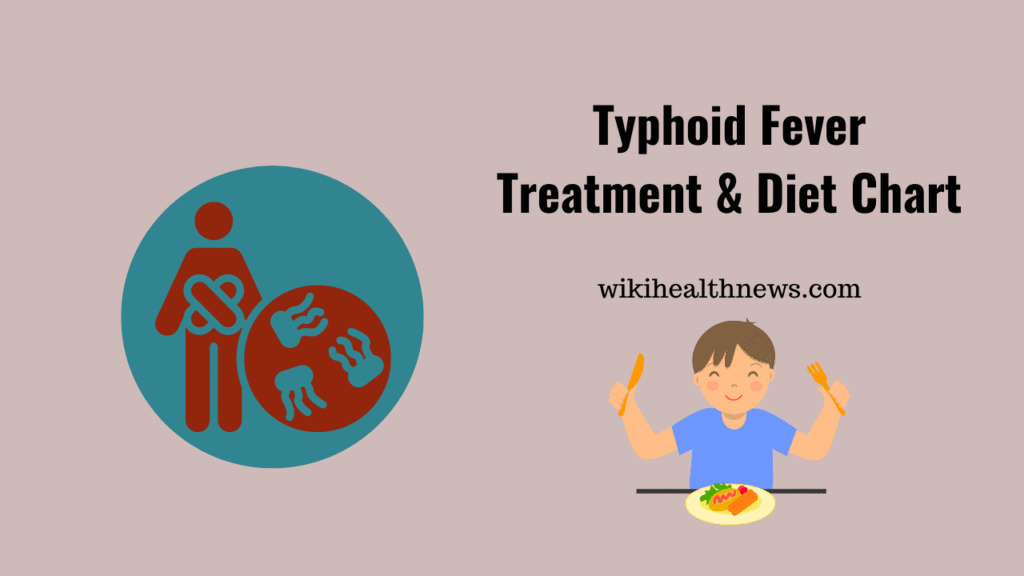Typhoid fever is a life-threatening bacterial infection caused by Salmonella enterica serotype Typhi. It spreads through contaminated food and water, primarily in developing countries. Without prompt treatment, typhoid can lead to serious complications. Thankfully, antibiotics have significantly reduced the severity and mortality of this disease.
What is Typhoid Fever?
Typhoid fever is an enteric fever caused by the bacterium Salmonella Typhi. It mainly affects the intestines and bloodstream. The infection is transmitted through:
- Contaminated drinking water
- Poor sanitation
- Infected food handlers

Symptoms of Typhoid Fever
Typhoid fever is a bacterial infection caused by Salmonella Typhi. The symptoms you’ve listed are common manifestations of the disease. Here’s a brief overview:
Common Symptoms
- High-grade fever: A persistent fever, often reaching 103-104°F (39.4-40°C), is a hallmark symptom.
- Severe headache: Headaches can be intense and debilitating.
- Abdominal pain: Pain and tenderness in the abdomen are common.
- Loss of appetite: Decreased appetite and weight loss often occur.
- Diarrhea or constipation: Some people may experience diarrhea, while others may have constipation.
- Skin rashes (rose spots): Small, pink spots or rashes may appear on the trunk of the body.
- Fatigue and weakness: Feeling extremely tired and weak is common.
Additional Symptoms
- Nausea and vomiting: Some people may experience nausea and vomiting.
- Cough: A dry cough may be present in some cases.
- Sore throat: Some individuals may experience a sore throat.
Complications
If left untreated, typhoid fever can lead to serious complications, such as:
- Intestinal perforation: A hole in the intestine that can lead to peritonitis, a potentially life-threatening infection.
- Internal bleeding: Severe bleeding in the intestines can occur.
Treatment
Typhoid fever is typically treated with antibiotics. It’s essential to seek medical attention if symptoms persist or worsen over time.
Early diagnosis and antibiotic treatment are crucial to prevent severe complications like intestinal perforation, internal bleeding, and even death.
+++++++++++++++++++++++++++++++++++++++++++++++++++++++++++
Why are Antibiotics Important for Typhoid?
Before antibiotics were discovered, typhoid fever was a deadly disease. Antibiotics kill Salmonella Typhi bacteria, reduce fever, prevent complications, and reduce transmission.
However, due to overuse and misuse of antibiotics, drug-resistant strains of Typhi are now emerging. Therefore, choosing the right antibiotic based on resistance patterns is critical.
Best Antibiotics for Typhoid Fever (2025 Treatment Guidelines)
1. Fluoroquinolones
- Examples: Ciprofloxacin, Ofloxacin
- Usage: Effective for drug-sensitive typhoid strains.
- Dosage: Ciprofloxacin 500–750 mg twice daily for 7–14 days.
- Note: Due to rising resistance, they are not first-choice drugs in South Asia.
2. Third-Generation Cephalosporins
- Examples: Ceftriaxone (injectable), Cefixime (oral)
- Usage: First-line treatment for typhoid in most regions with resistance.
- Dosage: Ceftriaxone 2g IV once daily for 10–14 days; Cefixime 400 mg orally daily.
3. Azithromycin
- Usage: Excellent choice for uncomplicated typhoid, especially for travelers.
- Dosage: 500–1000 mg once daily for 7 days.
- Advantages: Convenient oral administration, fewer side effects.
4. Carbapenems (For XDR Typhoid)
- Examples: Meropenem, Imipenem
- Usage: Reserved for extensively drug-resistant typhoid fever.
- Dosage: Meropenem 1g IV every 8 hours.
- Note: Expensive and used in hospital settings only.
Antibiotic Resistance in Typhoid: MDR & XDR Explained
Multidrug-Resistant (MDR) Typhoid
- Resistant to first-line antibiotics like ampicillin, chloramphenicol, and co-trimoxazole.
- Treated with ceftriaxone or azithromycin.
Extensively Drug-Resistant (XDR) Typhoid
- Resistant to fluoroquinolones and third-generation cephalosporins.
- Requires treatment with carbapenems (e.g., Meropenem).
Why is Resistance Rising?
- Overuse and misuse of antibiotics.
- Incomplete treatment courses.
- Lack of sanitation and clean water.
Supportive Care in Typhoid Treatment
While antibiotics target the bacteria, supportive care helps in faster recovery:
- Hydration therapy: Oral rehydration salts (ORS) or IV fluids.
- Antipyretics: Paracetamol to control high fever.
- Nutritional support: Soft, easily digestible foods to maintain strength.
- Rest: Complete bed rest to conserve energy.
Preventive Measures for Typhoid
Prevention is always better than cure. To avoid typhoid infection:
- Drink only safe, boiled, or filtered water.
- Wash hands regularly with soap.
- Avoid street food and raw vegetables.
- Get vaccinated against typhoid (Typhoid conjugate vaccine).
- Maintain good sanitation and hygiene.
Table: Typhoid Antibiotics – Summary (2025)
| Antibiotic | Usage | Dosage | Resistance Level |
|---|---|---|---|
| Ciprofloxacin | Sensitive strains | 500–750 mg BID | High in South Asia |
| Ceftriaxone | MDR strains | 2g IV daily | Effective |
| Cefixime | MDR strains | 400 mg orally daily | Effective |
| Azithromycin | Uncomplicated cases | 500–1000 mg daily | Effective |
| Meropenem | XDR cases | 1g IV every 8h | Reserved for XDR |
FAQs on Typhoid Antibiotics
Q1. Can typhoid fever be cured with antibiotics?
Yes, when treated promptly with the right antibiotics, typhoid fever can be completely cured.
Q2. How long does it take to recover from typhoid with antibiotics?
Most patients recover within 7-14 days of starting antibiotics, depending on the severity.
Q3. What happens if typhoid is not treated?
Untreated typhoid can lead to serious complications like intestinal perforation, sepsis, and death.
Q4. Is self-medication safe for typhoid treatment?
No. Antibiotics should always be taken under medical supervision after a proper diagnosis.
Q5. Can typhoid fever come back after treatment?
Relapse can occur in 5-10% of cases, especially if the full course of antibiotics is not completed.
Conclusion
Typhoid fever remains a significant public health concern, especially in developing countries. Antibiotics are the cornerstone of treatment, but rising resistance makes it essential to choose wisely. Always consult a healthcare provider, avoid self-medication, and follow hygiene practices to prevent infection.
Early treatment saves lives. Stay informed, stay safe!
——————————————————————————————https://www.medicalnewstoday.com/articles/156859
https://pram123.com/mental-health-awareness-symptoms-causes-coping-tip/
+++++++++++++++++++++++++++++++++++++++++++++++++++++++++++++++++++++++++